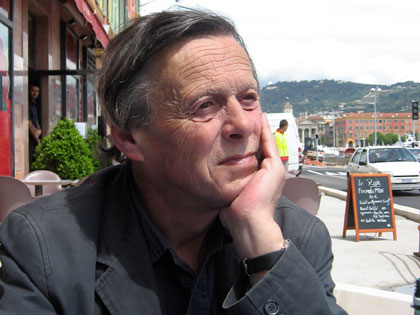Irish Independent, January 12, 2013
In the early 1970s, Peter Sheridan’s career was at a low point. Playwright, actor and brother of future moviemaker Jim, he had embarked on an arts degree in University College Dublin but, with a wife and child to support, he needed a maintenance grant from Dublin Corporation. To this end he sought the help of metaphysics professor Desmond Connell, who was later to become Archbishop of Dublin.
The support wasn’t forthcoming, Connell haughtily informing him that his situation was “of your own making” – a dismissive response that “turned me against metaphysics for ever” and made him disposed towards the existentialists, who “might be atheists, but they had compassion”.
However, although money remained a concern for some years, his artistic future came into focus a while later when he and Jim (always known to the family as Shea) gained control of the Project Arts Centre, which had started out in Lower Abbey Street but which now occupied premises in East Essex Street. And though Peter resisted the idea of getting on to the board, Jim was more pragmatic, arguing that “you have to go where the power is” if you want to “change the rules”.
This they duly did and the Project soon became the springboard for such young talents as Gabriel Byrne, Mannix Flynn, Liam Neeson, Alan Devlin and, of course, the brothers themselves, while others who drift in and out of the narrative include Neil Jordan, Noel Pearson, Tony Gregory and Bono – who, we’re told, once belonged to a Christian sect called the Children of God.
This is Peter Sheridan’s third volume of memoirs and as it ends in the early 1980s it seems likely that there’s at least another volume to come – all of which prompts the query: how interesting can one man’s life be?
The question is worth asking because although the first memoir, 44, was an evocative account of the author’s childhood and youth in the environs of Sheriff Street, this third volume is curiously flat – surprisingly so given its cast of famous characters, about whom the author has little to say that’s original or arresting.
Thus we learn of Mannix Flynn merely that “there was something about him, a street energy, something that said ‘don’t mess with me’”; that Alan Devlin was “a Jekyll and Hyde”; that Gabriel Byrne was “a real box-office draw”; and that advice about writing from Tom Kilroy was “a gem of wisdom”.
There are some vivid moments, such as the account of a spat between Neil Jordan and Jim Sheridan over story ownership, leading the author to reflect that “they were both poor listeners. The idea in their own heads always fascinated them more than the idea in anyone else’s”.
Intriguing, too, is the account of how Dublin Theatre Festival director Brendan Smith tried to veto a full-frontal scene in The Liberty Suit (later a cause of ownership dispute between the author and Mannix Flynn) on the grounds that “the rules of the Olympia theatre don’t allow for nudity”. And when told there wasn’t supposed to be censorship in the theatre, he replied “No, but there are traditions. And good manners”.
But in a book this length (340 pages) there should be many more such moments. However, there’s little room for insights or introspection in a memoir that seems primarily intent on back-slapping and mythologising and that entirely eschews the pleasures of score-settling – you won’t find here any of the gleeful tittle-tattle or withering putdowns administered by Rupert Everett in his two elegantly uproarious memoirs.
Instead, we’re told that the Liberty Hall staging of The Non-Stop Connolly Show, a 26-hour crashing bore (I was there for as long as I could bear it), was “the theatrical event of 1975”, which it certainly wasn’t. We’re also told that a row between actors Alan Stanford and Jer O’Leary during a Project production of Marat/Sade was “the stuff of legend”, which is news to me, even though I was reviewing drama at the time.
The author also feels the need to remind us of his own credentials, both politically (as a republican-minded socialist) and artistically. A community theatre play in which he was involved received “a glowing review” from a critic who was “bowled over by the authenticity of it all”, while winning the Rooney Prize was an indication that “our generation were finally coming to the fore” – borne out by his subsequent appointment as the Abbey Theatre’s writer in residence, which showed that “my star was definitely in the ascendant”.
Such self-aggrandisement is forgiveable and would even be endearing in a memoir that was otherwise intent on a degree of self-scrutiny. But apart from an acknowledgemt of drink problems and of the marital rows this occasionally caused, there’s little sense of the inner man.
Instead, the book opts to re-enact the rare oul times among the movers and shakers of a certain Dublin arts scene in the Seventies and early Eighties. You had to be there, though even if you were you might find this account somewhat rose-tinted.
